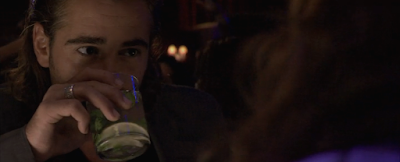Vulture film critic Bilge Ebiri recently charted the evolution of “Miami Vice” (2006) from, as he put it, misfire to masterpiece, noting that Michael Mann’s movie version was both nothing like either the 1980s TV show on which it was based or the “kitschy, colorful snarkfest(s)” that defined TV shows as Movies of the era. No, it was something else entirely, “a dream,” Ebiri wrote, “of tortured romanticism...unbridled intimacy...downright transcendentalist focus on element over incident, where darkening skies and undulating waves and distant glimpses of lightning seem to say more than any line of dialogue ever could.” That, it goes without saying, was never going to be box office manna and it was only later, freed from “the expectations of industry journalists and box office prognosticators and audiences looking for something familiar and satisfying” that it found an audience.
Ebiri notes that some critics fell hard for Mann’s fourth magnum opus all the way back in 2006. Not to toot my own horn, which is what one says in advancing of tooting his or her own, I knew it was a masterpiece, not a misfire, when I saw it on opening night, July 28, 2006. I wrote a rave, just a few days later, though that was Cinema Romantico’s Paleozoic Era and wild horses could not drag the link out of me. (You can dig around the blog a little bit and find it if you want.) My prose was crude and, most importantly, I did not yet have the tools in my critical toolbox to truly explain why it worked. Then again, I have spent the ensuing 15 years mostly fumbling around to explain why “Miami Vice” worked, usually falling back on bad poetry and absurd similes. The latest crack I took is as close as I got, I think, deeming it cinematic impressionism, which is a made-up term, granted, but don’t movies sometimes exceed the lexicon as it exists? How else do you describe a movie that feels unlike anything else?
I was thinking about “Miami Vice”, actually, just last week, after watching Mann’s “Last of the Mohicans” (1992), my favorite movie, on the big screen for the first time. The last 10 minutes of that movie, but especially Alice’s denouement, were the first time a movie ever opened a direct channel to my un/subconsciousness. That, though, was not even something I truly realized until years later, probably around the time I saw “Miami Vice” and the first few moments of the opening scene plugged into my un/subconsciousness too.
Scored, as Ebiri notes, to JAY-Z and Linkin Park’s “Numb/Encore”, the first shot is a virtual explosion of sight and sound, a silhouette dancing against all that color.
Then the shot switches to the side of the stage where people are dancing, the camera sliding from right to left behind our three intrepid members of Miami Vice.
Then a cut to the front.
Then a cut to the side. That’s it. But, of course, that’s also everything.
“Miami Vice” is nominally about a detective, Crockett (Colin Farrell), who gets so deep undercover that he longer knows, as his partner intimates, which way is up. He might as well be describing the viewing experience itself. Mann is asking you to forgo what you think you know about movies: how they feel, how they look, how they tell their story, if they even tell a story at all. And this opening scene is not so much an introduction as total immersion, plunging you straight into free fall, not asking you to let yourself go but clarifying you already have.








No comments:
Post a Comment